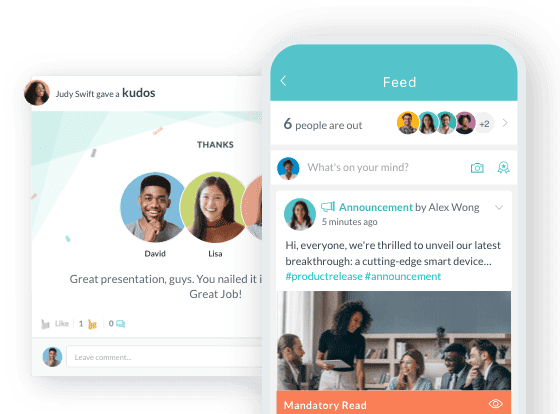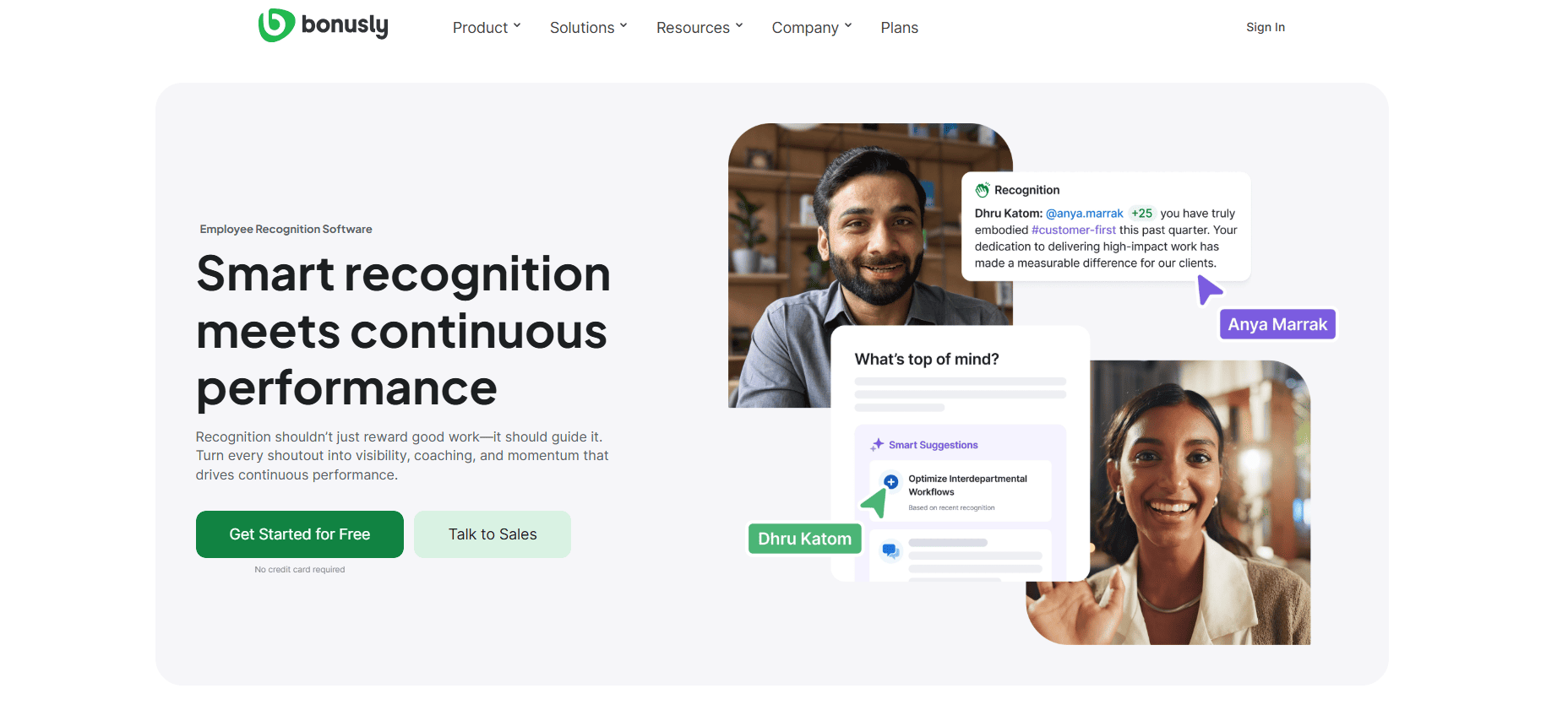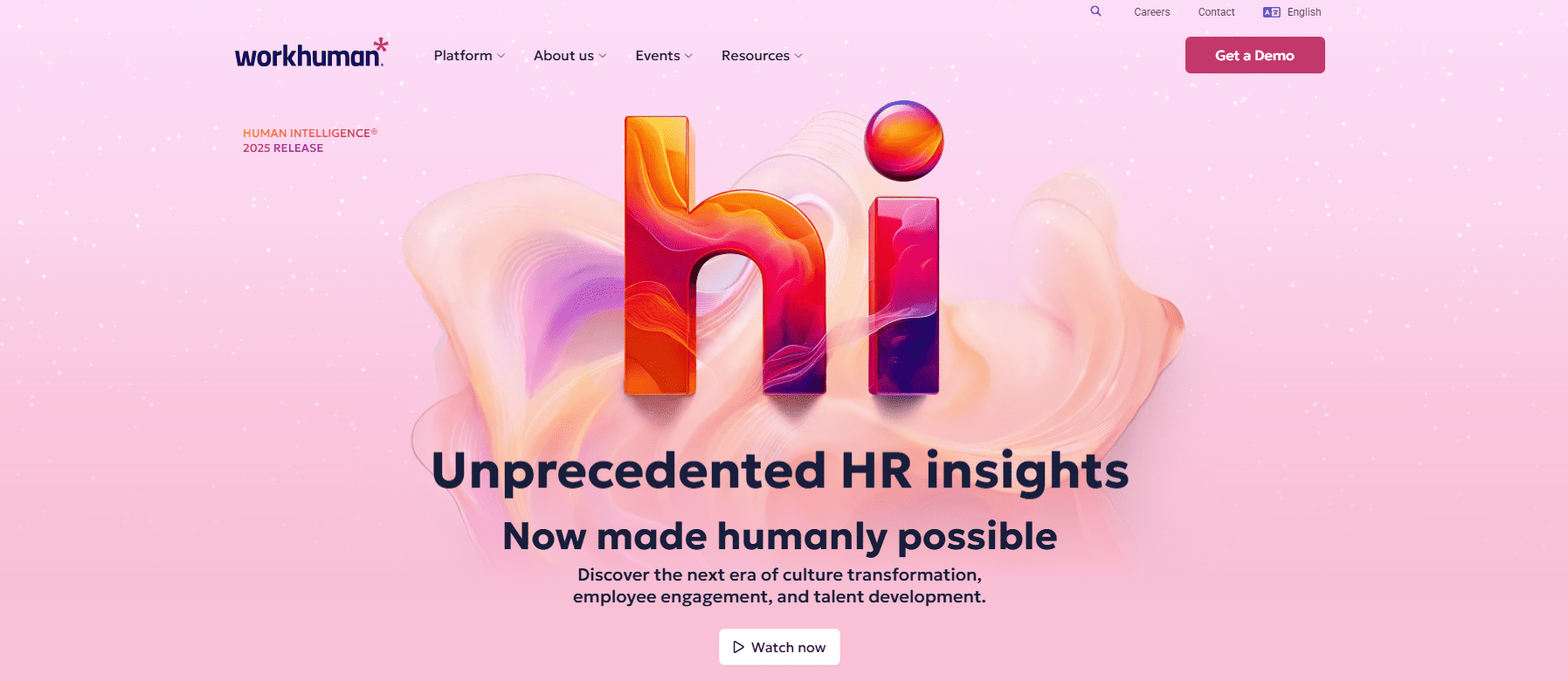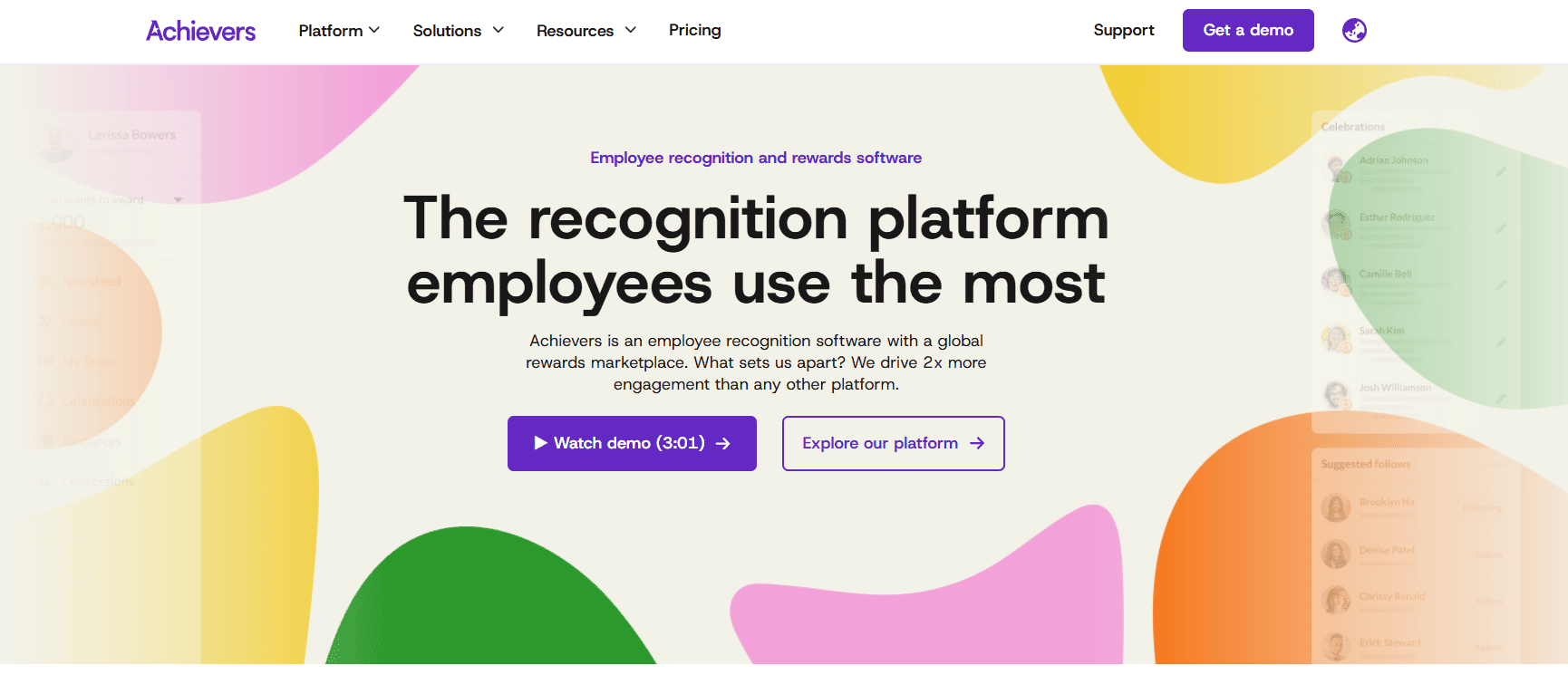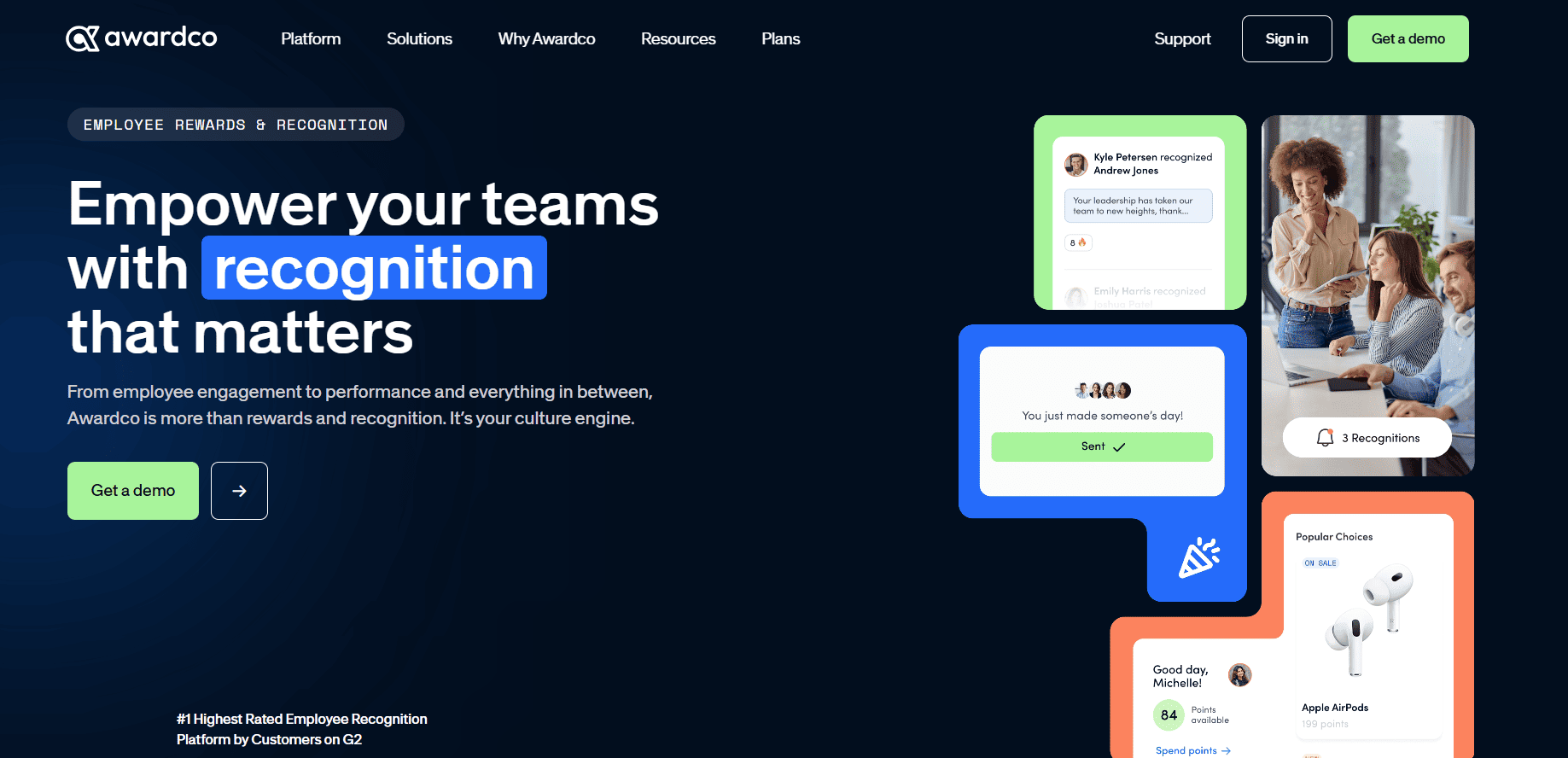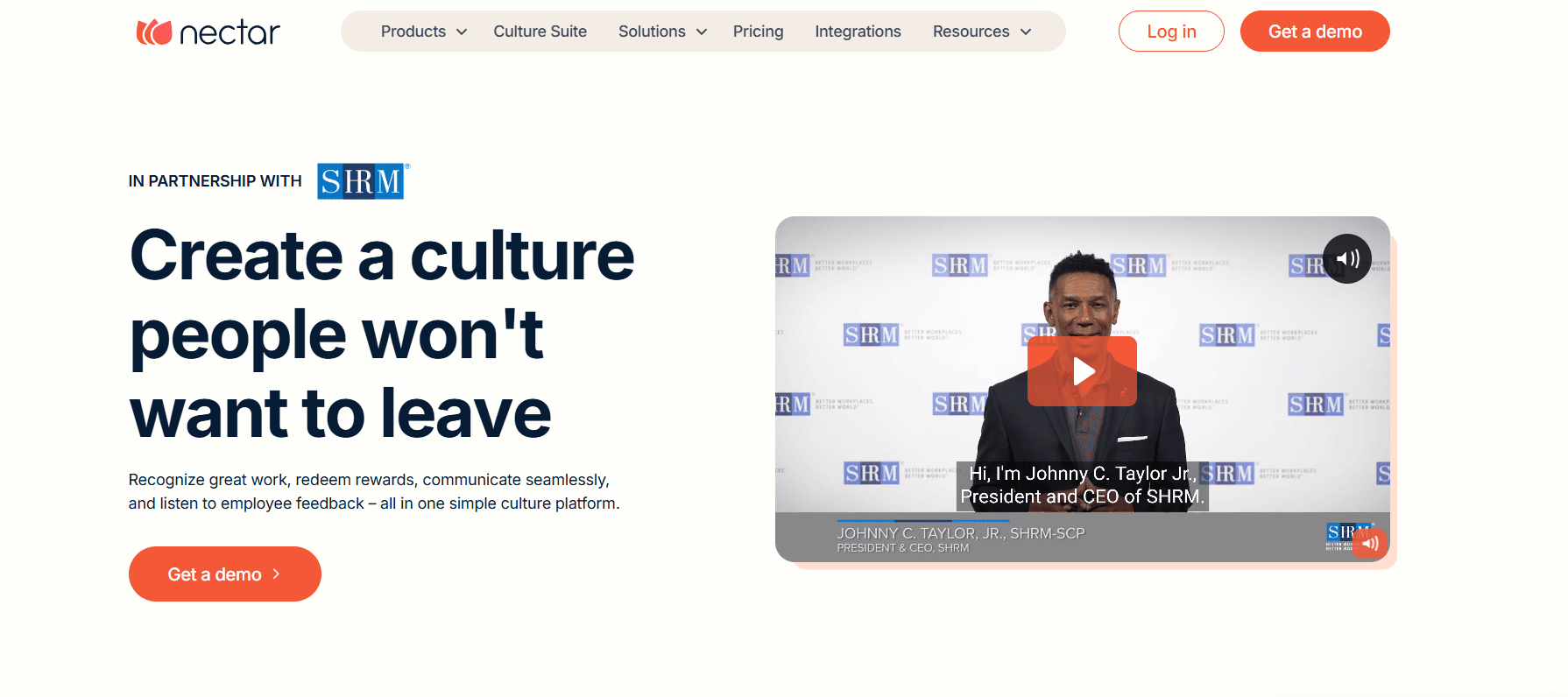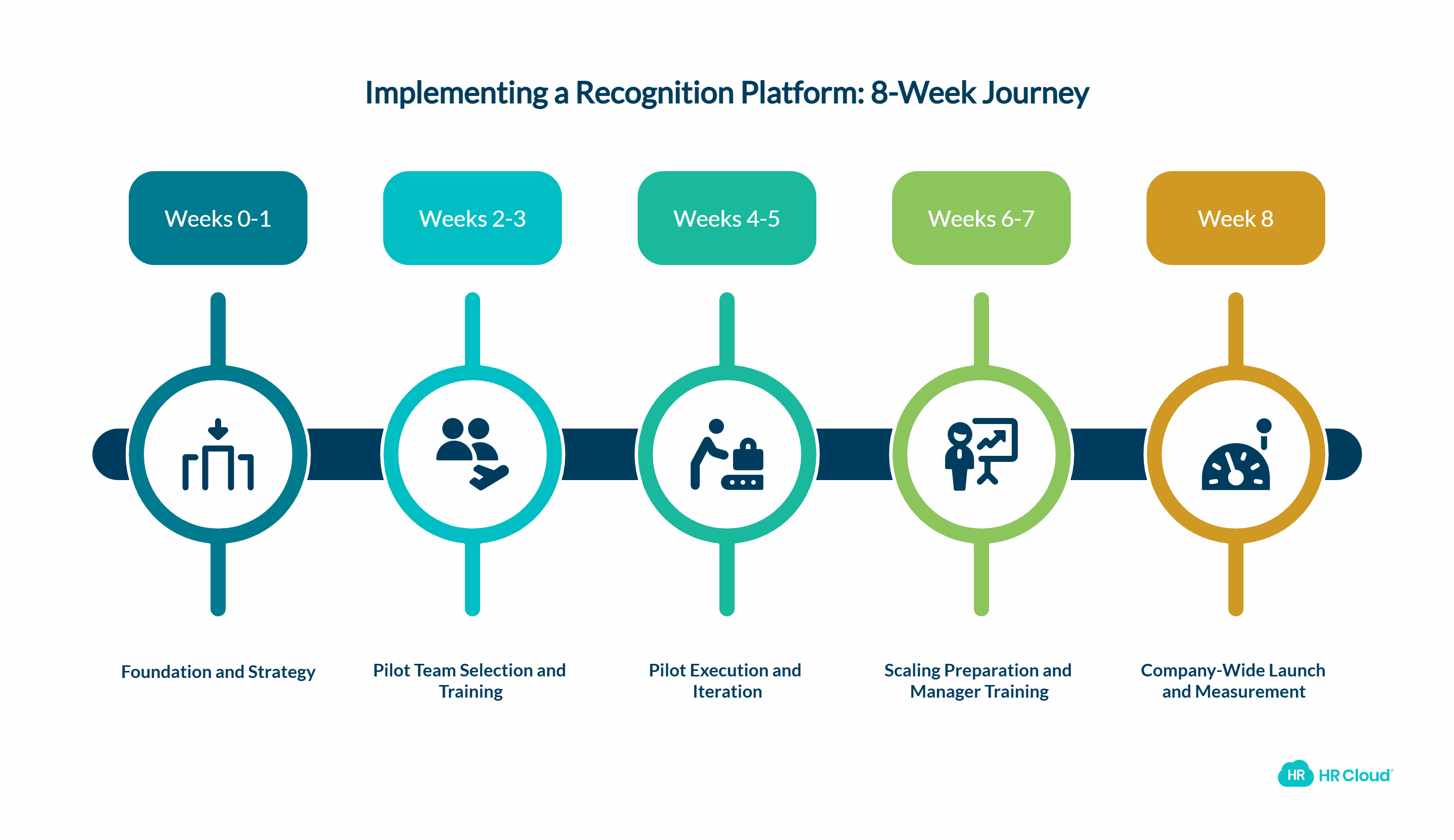Best Peer-to-Peer Recognition Software & Kudos Platforms (2025 Buyer's Guide)
.png)
- Why Digital Kudos Drive Measurable Business Impact
- Essential Features for Effective Employee Recognition Software
- Platform Integration Capabilities Comparison
- Employee Recognition Software Feature Comparison
- Recognition Platform Pricing Comparison
- Point Solutions vs. Integrated HR Platforms
- Red Flags: What to Watch For During Recognition Platform Evaluation
- Employee Recognition Software Comparison: Competitor Weaknesses and User Complaints
- Common Recognition Platform Weaknesses: What Review Data Reveals
- Implementation Timeline Comparison
- Implementation Playbook: 8-Week Pilot to Full Rollout
- Recognition Platform Buyer's Checklist: Avoiding Common Pitfalls
- Employee Recognition ROI Metrics
- Employee Recognition ROI: Key Performance Metrics and Measurement Strategies
- Why HR Cloud Workmates Stands Out for Modern Teams
- Recognition Program Success: Beyond Technology
- Real-World Results: How Organizations Transform Culture Through Recognition

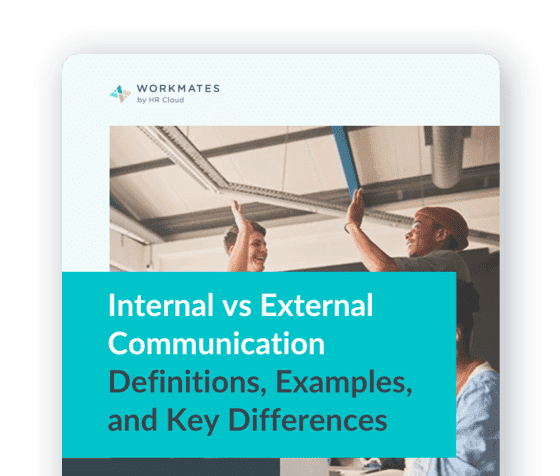
 Cut onboarding time
by 60%—here's the
Ultimate Checklist
that helped do it.
Cut onboarding time
by 60%—here's the
Ultimate Checklist
that helped do it.
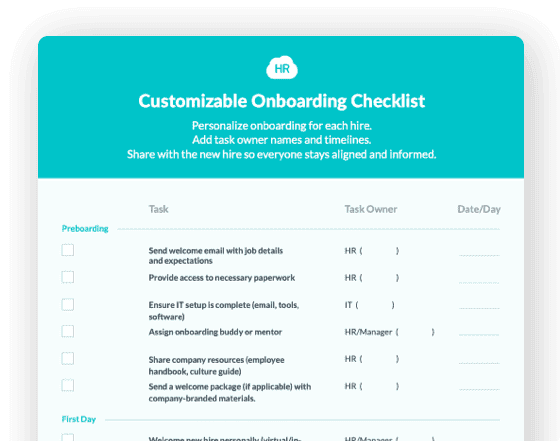
Picture this: A manufacturing team in Ohio just hit their monthly safety record. In the old days, maybe their supervisor would mention it in a meeting. Today? Sarah from packaging gives props to the whole crew through her phone, sparking a chain reaction of kudos that ripples across three shifts and two continents.
Recognition has gone digital, and the results speak for themselves. Employee recognition software has evolved from simple thank-you notes to comprehensive peer-to-peer recognition platforms that drive measurable business outcomes. Organizations seeking employee engagement solutions, workforce appreciation tools, and digital kudos systems now have access to sophisticated recognition and rewards platforms that integrate seamlessly with existing HR technology stacks.
The best employee recognition software combines instant peer recognition, customizable reward systems, and robust analytics to create cultures where appreciation becomes a daily practice rather than an annual event. Companies implementing modern recognition platforms report significant improvements in employee retention, workplace satisfaction, and team productivity.
Peer-to-peer recognition software transforms workplace culture by enabling instant appreciation between colleagues. Modern employee recognition platforms combine digital kudos, points-based reward systems, and real-time analytics to drive measurable engagement improvements.
HR Cloud's Workmates offers a comprehensive, mobile-first recognition and engagement platform, with seamless HRIS integration, and flexible reward systems that deliver measurable engagement results. While standalone recognition tools focus on single features, Workmates provides comprehensive employee recognition within an integrated HR platform, reducing implementation complexity for distributed teams, frontline workers, and remote employees.
Key differentiators include instant peer recognition, customizable rewards and gift card catalogs, advanced recognition analytics, and documented integrations with systems such as ADP, UKG, Workday, Paylocity, and other leading HRIS platforms.
Key Takeaways
-
Mobile-first recognition platforms increase adoption rates by 60-80% among deskless workers and frontline employees compared to desktop-only employee recognition systems
-
Integrated HRIS recognition solutions reduce implementation time by 40-60% versus standalone peer recognition tools, accelerating time-to-value for enterprise buyers
-
Flexible points systems with customizable reward catalogs outperform fixed gift card programs in employee satisfaction surveys and engagement metrics
-
Real-time recognition feeds amplify appreciation impact through social visibility, peer engagement, and values reinforcement across distributed teams
-
Advanced recognition analytics enable data-driven optimization with employee Net Promoter Score tracking, participation monitoring, and retention correlation analysis
-
Automated milestone recognition captures 80% more appreciation moments than manual-only employee recognition programs, improving coverage and consistency
Why Digital Kudos Drive Measurable Business Impact
The shift from annual employee awards to daily peer appreciation represents more than cultural change—it's a strategic business imperative. Gallup's research shows that well-recognized employees are 45% less likely to leave their jobs after two years, while McKinsey data reveals that up to 55% of employee engagement is driven by non-financial recognition.
However, most organizations struggle because they treat employee recognition as an HR initiative rather than a comprehensive workforce engagement strategy.
Modern peer-to-peer recognition platforms solve three critical business challenges through integrated employee appreciation systems. First, they democratize workplace recognition by removing managerial bottlenecks and enabling instant peer-to-peer kudos. When any employee can recognize any colleague, recognition volume typically increases 300-400% within the first quarter of implementation.
Second, employee recognition software creates transparency around organizational values and desired behaviors through social recognition feeds and customizable badge systems. This visibility helps reinforce company culture while highlighting specific achievements and contributions.
Third, comprehensive recognition platforms generate actionable workforce analytics that connect employee appreciation to measurable business outcomes including retention rates, productivity metrics, and engagement scores.
HR Cloud's comprehensive analytics platform demonstrates this connection by tracking recognition frequency, participation rates, and business outcomes in real-time. Organizations can correlate kudos activity with employee engagement metrics, voluntary turnover rates, and productivity measures through integrated dashboards.
The mobile accessibility factor fundamentally changes employee recognition effectiveness for distributed workforces. Frontline employees, deskless workers, and field-based teams require recognition tools that function seamlessly on smartphones during break times, shift changes, and remote work scenarios. This mobile-first requirement separates enterprise-grade recognition platforms from legacy employee appreciation systems designed primarily for office-based workers.
According to SHRM research, organizations with structured employee recognition programs experience significantly lower turnover rates compared to companies without formal recognition initiatives, while Harvard Business Review studies demonstrate that companies with positive workplace culture experienced 20% less turnover and grew revenue 4 times faster than organizations with negative cultural environments.
Essential Features for Effective Employee Recognition Software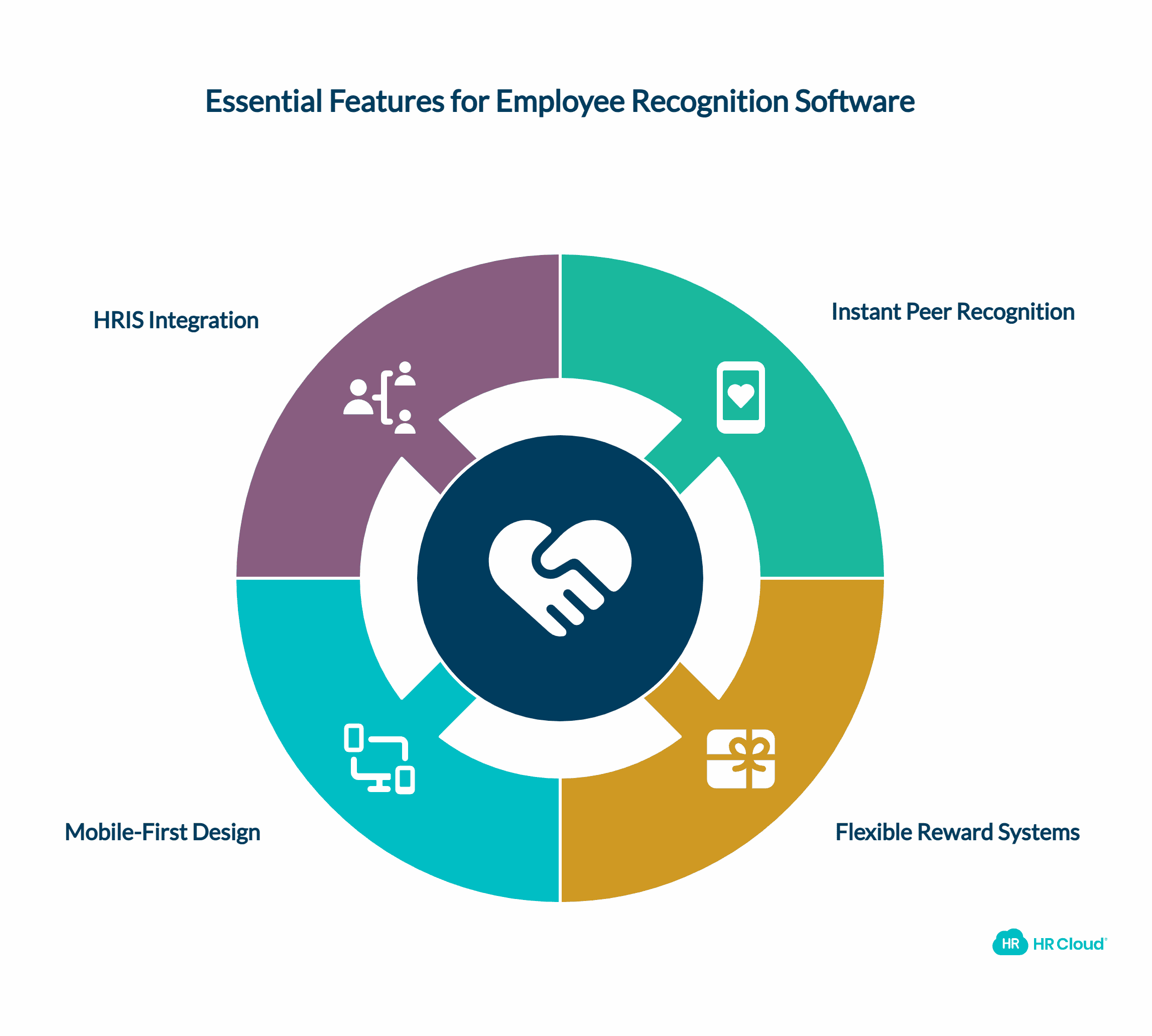
Modern employee recognition platforms require specific capabilities to drive meaningful workforce engagement and measurable business results. Organizations evaluating recognition software should prioritize features that enable seamless peer appreciation, comprehensive reward management, and actionable workforce analytics.
Instant Peer-to-Peer Recognition with Social Visibility
The most effective employee recognition occurs when giving kudos feels as intuitive as sending a text message. Leading recognition platforms enable employees to acknowledge peer achievements within 30 seconds through mobile-optimized interfaces with streamlined workflows. Social recognition feeds amplify individual appreciation into team motivation—when one employee receives kudos for customer service excellence, the entire organization observes recognized behaviors and performance standards.
HR Cloud's Workmates exemplifies this approach with its integrated newsfeed design that embeds recognition into daily communication workflows. Employees can deliver peer-to-peer kudos with customizable recognition badges, personalized appreciation messages, and instant sharing across departments, locations, or project teams.
Flexible Points Systems and Customizable Reward Catalogs
Recognition points without meaningful redemption options create employee frustration rather than sustained motivation. Comprehensive recognition platforms offer both extensive gift card catalogs and custom reward options that reflect organizational culture and employee preferences. Progressive organizations leverage points for additional paid time off, preferred parking assignments, charitable donations, or team celebration budgets that align with company values.
Workmates enables organizations to configure both gift card points and custom reward points within unified recognition systems, providing employee choice while maintaining administrative control over budgets, approval workflows, and reward appropriateness.
Mobile-First Recognition Design for Frontline Teams
Office-based workers represent fewer than 30% of the global workforce, yet many employee recognition platforms continue prioritizing desktop experiences over mobile accessibility. Mobile-first recognition design requires touch-optimized interfaces, offline functionality, and seamless integration with communication tools that frontline teams, deskless workers, and field-based employees actively use.
The recognition participation gap between office workers and frontline employees often reflects technology accessibility rather than organizational appreciation culture. When recognition platforms function seamlessly on smartphones and tablets, adoption rates among deskless workers consistently match or exceed office-based team participation.
HR Cloud's mobile app exemplifies mobile-first recognition design with fully customizable branding, real-time push notifications, and seamless integration with existing productivity tools. The platform enables frontline teams to participate equally in recognition programs whether they work in manufacturing facilities, retail locations, healthcare environments, or field service operations.
Strategic HRIS Integration and Communication Platform Connectivity
Standalone employee recognition tools create data silos and adoption friction that limit program effectiveness. Successful recognition implementations connect seamlessly with existing HRIS platforms for automated employee onboarding, organizational structure management, and performance management integration. Additionally, native Slack, Microsoft Teams, and mobile notification integration ensures recognition reaches employees through their preferred communication channels.
Workmates integrates natively with ADP Workforce Now, enabling single sign-on authentication, automated employee data synchronization, and streamlined workflow management. Teams can also connect Slack and Microsoft Teams to share peer recognition across communication channels, reducing manual copy-and-paste work.
Platform Integration Capabilities Comparison
|
Integration Type |
HR Cloud Workmates |
Bonusly |
Kudos |
Workhuman |
Achievers |
Awardco |
Nectar |
|
ADP Workforce Now |
✅ Native |
⚠️ API only |
⚠️ Professional services |
⚠️ Custom development |
❌ Limited |
⚠️ Third-party |
❌ None |
|
UKG/Kronos |
✅ Native |
❌ None |
⚠️ Professional services |
✅ Available |
⚠️ Limited |
❌ None |
❌ None |
|
Workday |
⚠️ API available |
⚠️ Limited |
✅ Native |
✅ Native |
✅ Available |
⚠️ Limited |
❌ None |
|
Slack |
✅ Native |
✅ Native |
✅ Native |
⚠️ Limited |
✅ Available |
⚠️ Basic |
✅ Native |
|
Microsoft Teams |
✅ Native |
✅ Available |
✅ Available |
⚠️ Limited |
✅ Available |
⚠️ Basic |
⚠️ Limited |
|
Office 365/Azure |
✅ SSO + API |
✅ SSO only |
✅ SSO + API |
✅ SSO + API |
✅ SSO only |
⚠️ SSO only |
⚠️ SSO only |
|
Google Workspace |
✅ SSO + API |
✅ SSO only |
✅ SSO only |
⚠️ SSO only |
⚠️ Limited |
⚠️ SSO only |
⚠️ SSO only |
|
Mobile App Quality |
✅ Native iOS/Android |
⚠️ Mobile web |
❌ Poor performance |
❌ Limited functionality |
❌ Desktop-focused |
❌ Frequent crashes |
⚠️ Basic features |
|
API Access |
✅ Full REST API |
⚠️ Limited endpoints |
✅ Comprehensive |
⚠️ Enterprise only |
⚠️ Limited access |
⚠️ Restricted |
❌ Minimal |
✅ = Excellent native integration | ⚠️ = Available with limitations | ❌ = Poor or not available
Advanced Recognition Analytics and Workforce Insights
Employee recognition programs fail when they operate without data-driven optimization. Effective recognition platforms provide comprehensive dashboards displaying recognition frequency metrics, employee participation rates, reward redemption patterns, and sentiment analysis. These workforce insights help identify program gaps, celebrate high-participating teams, and correlate recognition data with retention rates, engagement scores, and productivity measures.
Look for recognition analytics that answer strategic business questions: Which managers consistently recognize their team members? Are specific locations, departments, or employee groups under-recognized? How does peer recognition frequency correlate with employee survey scores, voluntary turnover rates, and performance metrics?
Automated Milestone Recognition and Achievement Tracking
Manual employee recognition misses 70-80% of meaningful workplace moments including work anniversaries, project completions, safety milestones, and performance achievements. Automated recognition systems trigger appreciation for significant events while maintaining personalization—automated milestone notifications should prompt human recognition rather than replacing authentic peer appreciation.
Workmates includes structured nomination features for recognition campaigns and automated milestone tracking while preserving the personal touch that makes employee appreciation meaningful and culturally relevant.
Employee Recognition Software Feature Comparison
|
Platform |
Mobile-First |
HRIS Integration |
Custom Rewards |
Recognition Analytics |
Pricing Model |
Implementation Time |
|
HR Cloud Workmates |
✅ Yes |
✅ Native ADP/UKG |
✅ Unlimited |
✅ Advanced |
Transparent |
2-4 weeks |
|
Bonusly |
❌ Desktop-focused |
⚠️ Limited |
❌ Point caps |
⚠️ Basic |
Per-user |
4-6 weeks |
|
Kudos |
⚠️ Mobile available |
⚠️ Complex setup |
❌ Restricted |
⚠️ Basic |
Module-based |
3-6 months |
|
Workhuman |
❌ Desktop-focused |
⚠️ Professional services |
❌ Limited catalog |
⚠️ Basic |
Enterprise-only |
6-12 months |
|
Achievers |
❌ Desktop-focused |
⚠️ Manual setup |
❌ Expensive scaling |
⚠️ Basic |
High per-user |
8-16 weeks |
|
Awardco |
⚠️ Poor mobile UX |
⚠️ Limited APIs |
⚠️ Amazon-focused |
❌ Minimal |
Complex pricing |
6-12 weeks |
|
Nectar |
❌ Desktop-focused |
❌ Limited enterprise |
⚠️ SMB-focused |
❌ Basic reports |
Per-user |
2-6 weeks |
✅ = Excellent | ⚠️ = Limited/Requires workarounds | ❌ = Poor/Not available
Recognition Platform Pricing Comparison
|
Platform |
Starting Price |
Per-Employee Cost |
Hidden Fees |
Implementation |
Annual Contract |
|
HR Cloud Workmates |
Contact for quote |
Transparent |
None |
Included |
Flexible |
|
Bonusly |
$3/employee/month |
Point allowance costs |
Monthly caps |
Extra cost |
Required |
|
Kudos |
$3-8/employee/month |
Professional services |
Integration fees |
$10K-50K+ |
Required |
|
Workhuman |
Enterprise only |
$6-12+/employee |
Module upsells |
$25K-100K+ |
Required |
|
Achievers |
$5-15/employee/month |
Scaling penalties |
Add-on modules |
Professional services |
Required |
|
Awardco |
$2-6/employee/month |
Amazon markup |
Platform fees |
Setup costs |
Required |
|
Nectar |
$2.75-4.50/employee/month |
Limited features |
Enterprise upgrades |
Self-service |
Required |
Pricing as of 2024 - Contact vendors for current rates
Point Solutions vs. Integrated HR Platforms
The build-versus-buy decision for employee recognition software often centers on specialization versus integration trade-offs. Point solutions excel in specific recognition features but create operational complexity through additional vendor relationships, separate login requirements, and data integration challenges that can limit program effectiveness.
Integrated HR platforms like HR Cloud balance specialized features with operational simplicity. Organizations managing multiple HR functions benefit from unified dashboards, shared employee databases, and coordinated workflows between recognition, performance management, and broader employee engagement initiatives.
Choose point solutions when: Employee recognition represents your primary HR technology need, you have dedicated technical resources for tool management, or you require highly specialized features not available in integrated platforms.
Choose integrated platforms when: You're managing multiple HR functions simultaneously, implementation speed represents a priority, you have distributed or frontline teams requiring mobile accessibility, or reducing vendor complexity aligns with strategic objectives.
Red Flags: What to Watch For During Recognition Platform Evaluation
Implementation Warning Signs
Vague timeline estimates: Be cautious of vendors providing implementation timelines without specific milestones or contingency planning. Multiple user reviews indicate that platforms quoting "4-6 weeks" often extend to 12-16 weeks due to integration complexity and change management requirements.
Professional services dependency: Question vendors requiring extensive professional services for standard implementations. Some platforms necessitate costly consulting engagements for basic configuration, significantly increasing total cost of ownership beyond initial software licensing fees.
Integration complexity: Evaluate vendors carefully if they cannot demonstrate live HRIS integration during demo presentations. User reviews frequently mention post-purchase integration challenges that delay launches and increase implementation costs.
Cost Structure Concerns
Module-based pricing: Be wary of platforms with essential features locked behind additional module purchases. Several recognition software providers offer basic packages that require expensive add-ons for reporting, mobile access, or advanced reward options.
Per-user scaling costs: Calculate total cost of ownership carefully for platforms with per-user pricing models, particularly if you have large frontline workforces. Some solutions become prohibitively expensive as employee counts increase, forcing organizations to limit program participation.
Hidden professional services: Question vendors who bundle mandatory professional services without clear scope definitions. Multiple user reviews mention surprise consulting costs for standard configurations that should be included in base implementations.
Technology Limitations
Mobile experience deficiencies: Test mobile functionality thoroughly during evaluation phases. Several platforms with strong desktop experiences provide inadequate mobile accessibility, creating participation inequality between office and frontline workers.
Offline functionality gaps: Verify offline capability if your workforce operates in areas with limited connectivity. Manufacturing, healthcare, and retail environments often require recognition tools that function without constant internet access.
Data export restrictions: Confirm data ownership and export capabilities before committing to recognition platforms. Some vendors limit access to organizational recognition data, creating challenges for custom reporting and analysis.
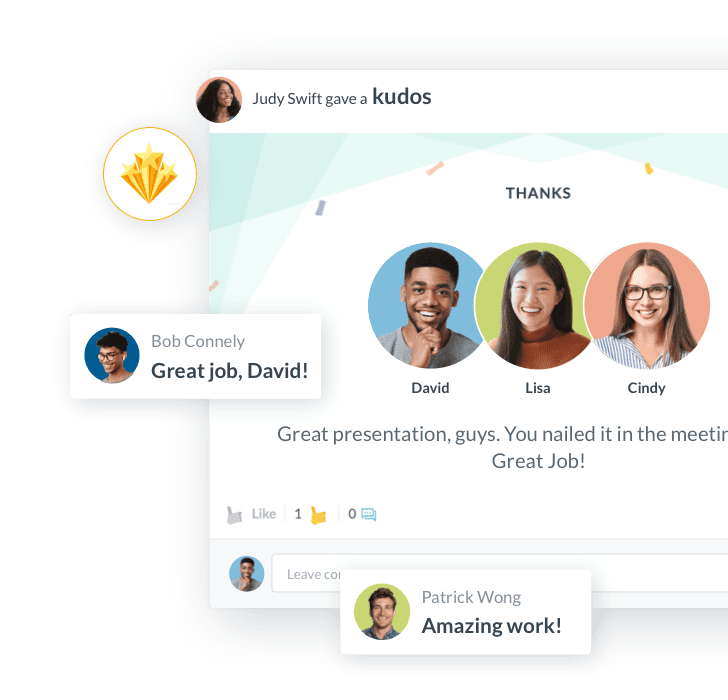
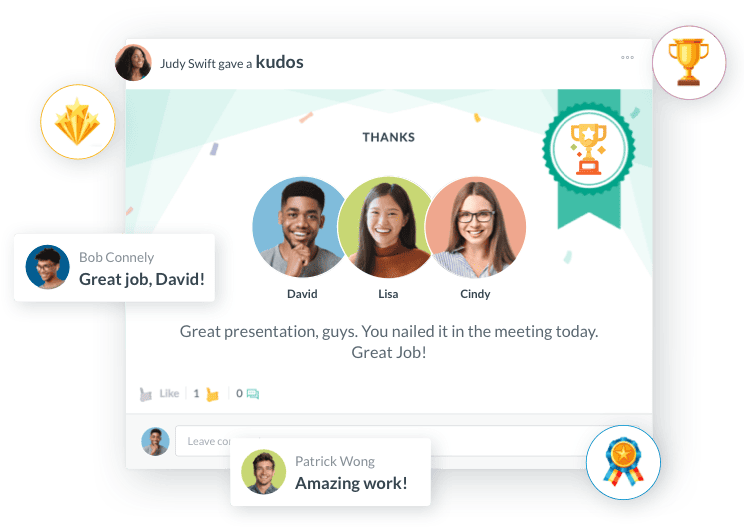
Vendor Support Issues
Support response times: Research customer support responsiveness through reference calls with existing customers. Multiple reviews cite slow technical support and limited availability during critical implementation phases.
Training resource quality: Evaluate user training materials and change management support during vendor selection. Inadequate training resources contribute to low adoption rates and program failure regardless of platform quality.
Contract flexibility: Review contract terms carefully for modification flexibility and termination options. Some vendors impose restrictive terms that limit organizational ability to adjust program scope or employee participation levels.
Employee Recognition Software Comparison: Competitor Weaknesses and User Complaints
Bonusly: Point Limitations and Reward Restrictions
Major user complaints from G2 and Gartner reviews:
Point allowance frustrations: Multiple reviewers cite monthly point caps that prevent adequate recognition during peak performance periods. Users report situations where high-performing employees cannot be properly recognized because managers exhaust their point allowances early in the month.
Limited customization options: Customers frequently complain about rigid badge systems and inability to create company-specific recognition categories. Several reviews mention that Bonusly's generic approach doesn't align with unique organizational cultures or values.
Integration difficulties: Users report challenges with Slack integration functionality, including delayed notifications and inconsistent message posting. Some reviewers mention that the platform works well in isolation but struggles when integrated with existing workplace tools.
Customer sentiment: "The point system feels restrictive when you want to recognize great work but have already hit your monthly limit." - G2 Review
Geographic reward limitations: International users frequently mention limited gift card options outside the US market, creating equity issues for global teams.
Kudos: Complex Implementation and Reward Redemption Issues
Consistent negative feedback patterns:
Extended implementation timelines: Multiple enterprise customers report implementation projects taking 3-6 months longer than initially quoted. Users cite complex configuration requirements and extensive professional services needs that significantly increase costs.
Reward redemption complexity: Customers frequently complain about confusing point-to-reward conversion processes and lengthy approval workflows for gift card redemption. Several reviews mention employees abandoning redemption attempts due to process complexity.
Mobile experience deficiencies: Frontline workers report significant difficulties using Kudos mobile applications, with complaints about slow load times, frequent crashes, and limited offline functionality.
Customer sentiment: "The redemption process is so complicated that our employees just stop trying to use their points." - Gartner Review
Cost escalation: Users report unexpected professional services fees and required module additions that weren't clearly communicated during the sales process, leading to budget overruns.
Workhuman: Limited Gift Options and Point Conversion Issues
Recurring user complaints:
Restricted reward catalogs: Multiple reviews cite disappointing gift card selections and limited local options for international employees. Users frequently mention that promised reward variety doesn't match actual available options.
Point conversion confusion: Customers report unclear point-to-cash conversion rates and inconsistent redemption values that create employee frustration and reduce program participation.
Implementation complexity: Enterprise customers frequently mention 6-12 month implementation timelines with extensive change management requirements that strain internal resources.
Customer sentiment: "We were promised hundreds of reward options but ended up with maybe 20-30 actually useful choices." - G2 Review
Support response issues: Users report slow customer service response times and difficulty reaching technical support during critical implementation phases.
Achievers: High Costs and Administrative Burden
User review pain points:
Expensive scaling costs: Customers frequently complain about per-user pricing models that become prohibitively expensive for large workforces, forcing organizations to limit program participation.
Administrative complexity: Users report that platform administration requires dedicated personnel and extensive ongoing management, creating unexpected operational overhead.
Integration challenges: Multiple reviews cite difficulties connecting Achievers with existing HRIS systems, leading to manual data management and synchronization issues.
Customer sentiment: "The platform works well but the cost per employee makes it impossible to include our entire workforce." - Gartner Review
Awardco: Platform Performance and User Experience Issues
Negative review patterns:
System reliability problems: Users report frequent platform outages and slow performance during peak usage periods, disrupting recognition programs and frustrating employees.
Limited mobile functionality: Customers complain about poor mobile app experiences that discourage frontline worker participation, creating recognition inequality across different employee types.
Complex navigation: Multiple reviews mention that the platform requires extensive training and has a steep learning curve that reduces organic adoption rates.
Customer sentiment: "The system is down more often than it's up, which kills employee enthusiasm for the recognition program." - G2 Review
Nectar: Scalability Limitations and Enterprise Feature Gaps
User feedback concerns:
Limited enterprise features: Growing companies report that Nectar lacks advanced analytics, complex approval workflows, and reporting capabilities needed for larger organizations.
Integration restrictions: Users mention limited API access and difficulty connecting with enterprise HRIS systems, creating data silos and manual workarounds.
Support scaling issues: Customers report that customer support quality decreases as company size grows, with longer response times and less personalized assistance.
Customer sentiment: "Great for small teams but doesn't scale well as we've grown from 100 to 500+ employees." - G2 Review
How HR Cloud Workmates Avoids These Common Issues
Addressing point limitation problems: Workmates provides unlimited custom rewards without restrictive point caps or monthly allowances that limit recognition frequency.
Simplified implementation: Standard 2-4 week deployment timelines with included professional services avoid the extended implementations that plague enterprise-only platforms.
Mobile-first design: Purpose-built mobile applications with offline functionality specifically designed for frontline and deskless workers.
Transparent pricing: Straightforward pricing models without hidden module costs, per-user scaling penalties, or surprise professional services fees.
Proven reliability: Enterprise-grade reliability with high-availability uptime SLAs and responsive customer support included in all service levels.
See how Workmates addresses these industry pain points in a personalized demonstration.
Common Recognition Platform Weaknesses: What Review Data Reveals
Analysis of user reviews across G2, Gartner, and industry feedback platforms reveals recurring pain points that organizations should evaluate when selecting employee recognition software. Understanding these limitations helps buyers make informed decisions and set appropriate expectations.
Reward Redemption Friction and Limited Gift Options
Workhuman and Kudos: Multiple user reviews cite frustrating reward redemption processes and limited gift card selection. Users frequently mention lengthy approval workflows for reward fulfillment and restricted international gift card availability. Some reviewers report point conversion confusion and unclear redemption policies that reduce employee satisfaction with reward programs.
Bonusly: Users consistently report point allowance restrictions that limit recognition frequency. Several reviews mention monthly point caps that prevent managers from adequately recognizing high-performing team members during busy periods or exceptional achievements.
Impact on organizations: Reward limitations reduce program participation and employee satisfaction with recognition initiatives. Companies should verify reward catalog breadth, international availability, and redemption process simplicity during evaluation phases.
Implementation Complexity and Extended Timelines
Enterprise recognition platforms (Kudos, Workhuman): User reviews frequently mention implementation timelines extending 8-16 weeks beyond initial estimates. Organizations report unexpected integration challenges with existing HRIS systems and extended professional services requirements that increase total cost of ownership.
Technical integration issues: Multiple reviews describe difficulties with single sign-on configuration, employee data synchronization, and mobile app deployment across distributed workforces. Some users report ongoing technical support issues that impact program adoption rates.
Small business challenges: Several platforms designed for large enterprises create unnecessary complexity for mid-size organizations, resulting in feature overload and administrative burden that reduces program effectiveness.
Mobile Experience and Accessibility Limitations
Desktop-first platforms: User reviews consistently highlight mobile experience shortcomings for platforms not designed with mobile-first architecture. Frontline workers report difficulty accessing recognition features through mobile devices, leading to participation inequality between office and field-based employees.
Offline functionality gaps: Multiple reviews mention recognition platform failures in locations with limited internet connectivity, particularly affecting manufacturing, healthcare, and retail environments where recognition moments occur frequently.
User interface complexity: Several platforms receive criticism for complicated navigation that requires extensive training for non-technical users, reducing organic adoption rates across diverse employee populations.
Pricing Transparency and Hidden Costs
Per-user pricing escalation: User reviews frequently mention unexpected cost increases as organizations scale recognition programs. Some platforms implement per-user pricing models that become prohibitively expensive for companies with large frontline workforces.
Module-based upselling: Organizations report frustration with feature limitations in base packages and pressure to purchase additional modules for essential recognition functionality. Several reviews mention surprise costs for professional services, custom integrations, and advanced reporting capabilities.
Contract flexibility concerns: Multiple user reviews cite difficulty modifying recognition program scope during contract periods and limited flexibility for seasonal workforce adjustments.
Analytics and Reporting Limitations
Data export restrictions: User reviews mention limited data export capabilities and restricted access to raw recognition data for custom analysis. Some platforms provide only predefined reports without flexibility for organizational-specific metrics.
Real-time analytics gaps: Several reviews note delays in recognition data updates and limited real-time visibility into program participation rates, making it difficult to identify and address adoption issues promptly.
Integration reporting challenges: Organizations report difficulty correlating recognition data with existing HR metrics due to limited API access and export functionality.
Customer Support and Training Inadequacies
Response time issues: Multiple user reviews across various platforms mention slow customer support response times and difficulty reaching technical support during implementation phases.
Training resource limitations: Several reviews cite insufficient user training materials and limited onboarding support for distributed teams, particularly affecting platforms targeting large enterprise customers.
Change management support: Organizations report receiving technology training but lacking change management guidance for cultural adoption, resulting in lower program participation rates than expected.
How Workmates Addresses Common Industry Pain Points
HR Cloud's integrated approach specifically addresses many competitor limitations through:
Simplified reward management: Unlimited custom reward options and streamlined redemption processes without complex approval workflows or geographic restrictions.
Accelerated implementation: Standard 2-4 week deployment timelines with included professional services and comprehensive HRIS integration support.
Mobile-first design: Purpose-built mobile applications with offline functionality designed specifically for frontline and deskless workers.
Transparent pricing: Straightforward pricing models without hidden module costs or unexpected professional services fees for standard implementations.
Comprehensive support: Included training resources, change management guidance, and responsive customer success support throughout implementation and ongoing usage.
Evaluate how Workmates addresses these common industry challenges in a personalized demonstration.
Implementation Timeline Comparison
|
Phase |
HR Cloud Workmates |
Industry Average |
Enterprise Platforms |
|
Planning & Setup |
3-5 days |
1-2 weeks |
3-4 weeks |
|
HRIS Integration |
2-3 days (ADP) |
1-3 weeks |
4-8 weeks |
|
Configuration |
1-2 days |
1-2 weeks |
2-4 weeks |
|
Testing & Training |
3-5 days |
1-2 weeks |
3-6 weeks |
|
Go-Live |
2-4 weeks total |
6-10 weeks |
12-24 weeks |
|
Professional Services |
Included |
$5K-15K |
$25K-100K+ |
Implementation Playbook: 8-Week Pilot to Full Rollout
Weeks 0-1: Foundation and Strategy
Start with leadership alignment on recognition objectives and success metrics. Define company values that will guide recognition categories and badge creation. Establish baseline measurements for employee Net Promoter Score (eNPS), recognition frequency, and engagement survey scores.
Configure the platform's organizational structure, integrate with existing HRIS systems, and establish SSO connectivity. For companies using ADP, Workmates integration typically completes within 2-3 business days with proper credential access. HR Cloud's HRIS integration capabilities streamline employee data synchronization across multiple systems.
Weeks 2-3: Pilot Team Selection and Training
Choose a pilot group representing different locations, roles, and engagement levels—not just your most enthusiastic employees. Frontline teams often provide the best testing ground because they reveal mobile usability issues and communication preferences.
Train pilot participants on giving meaningful recognition that connects to company values rather than generic appreciation. Effective recognition includes specific behaviors, impact descriptions, and appropriate badge selections. HR Cloud's employee communication platform supports training through targeted announcements and educational content distribution.
Weeks 4-5: Pilot Execution and Iteration
Monitor pilot metrics daily: recognition volume, active participants, mobile versus desktop usage, and point redemption patterns. Weekly check-ins with pilot participants reveal usability issues and feature requests before company-wide launch.
Adjust recognition categories, reward options, and communication strategies based on pilot feedback. Most successful programs require 2-3 iterative adjustments during pilot phases. Employee survey capabilities enable rapid feedback collection and program refinement.
Weeks 6-7: Scaling Preparation and Manager Training
Develop launch communication campaigns that emphasize behavior change rather than technology adoption. Train managers on modeling recognition behaviors and using analytics to identify team engagement patterns.
Configure automated milestones for birthdays, work anniversaries, and project completions. Set point allowances and approval workflows that match company budget and governance requirements. Performance management integration ensures recognition aligns with broader talent development initiatives.
Week 8: Company-Wide Launch and Measurement
Execute launch with communication cadence spanning multiple touchpoints: email announcements, manager talking points, intranet posts, and mobile notifications. Monitor adoption metrics and provide real-time support during the first two weeks.
Establish ongoing measurement rhythm with 30-60-90 day review cycles tracking recognition volume, participation rates, eNPS changes, and qualitative feedback patterns.
Get a detailed implementation timeline customized for your organization size and complexity.
Recognition Platform Buyer's Checklist: Avoiding Common Pitfalls
Implementation and Technical Evaluation
Demand live HRIS integration demonstrations: Require vendors to show actual data synchronization with your existing HR systems during demo presentations, not just screenshots or theoretical explanations.
Test mobile functionality extensively: Evaluate mobile app performance on actual employee devices in your work environments, particularly for frontline and field-based workers who rely primarily on smartphone access.
Verify offline capabilities: Confirm recognition functionality in areas with limited connectivity, essential for manufacturing, healthcare, retail, and field service environments where internet access may be inconsistent.
Request customer references for similar implementations: Speak directly with organizations of comparable size and industry to understand real-world implementation timelines, challenges, and ongoing satisfaction levels.
Cost and Contract Protection
Calculate total cost of ownership over 3 years: Include software licensing, professional services, ongoing support, and potential module additions to understand true program costs beyond initial quotes.
Identify all required professional services: Clarify which implementation activities require paid consulting versus included support to avoid surprise costs during deployment phases.
Negotiate contract flexibility terms: Ensure ability to modify employee participation levels, add locations, or adjust program scope without penalty fees or contract renegotiation requirements.
Confirm data ownership and export rights: Verify your organization's rights to access, export, and analyze recognition data without vendor restrictions or additional fees.
Feature and Functionality Verification
Test reward redemption processes: Complete actual gift card redemption workflows during evaluation to identify potential friction points that could impact employee satisfaction.
Evaluate analytics and reporting depth: Verify availability of raw data exports, custom report creation, and integration with existing business intelligence tools for comprehensive program analysis.
Assess customization limitations: Understand restrictions on badge creation, reward options, and program configuration to ensure alignment with organizational culture and values.
Confirm integration breadth: Verify native connectivity with your communication tools, HRIS systems, and other workplace technologies without requiring additional middleware or custom development.
Vendor Support and Training Assessment
Research customer support response times: Contact existing customers to understand typical support responsiveness and availability during business hours across different time zones.
Evaluate training resource comprehensiveness: Review user training materials, manager guides, and change management support to ensure adequate resources for successful adoption.
Understand ongoing support scope: Clarify which activities fall under standard support versus paid consulting to avoid unexpected fees for configuration changes or troubleshooting.
Verify vendor stability and roadmap: Research vendor financial stability, product development investment, and strategic direction to ensure long-term platform viability and continued innovation.
Red Flag Indicators to Avoid
|
Red Flag Category |
Warning Signs |
What This Means |
Questions to Ask |
|
Integration Issues |
Vendors unable to demonstrate live integrations during demos |
Poor technical capabilities or immature integration |
"Can you show us live data sync with our ADP system right now?" |
|
Hidden Costs |
Pricing models requiring significant module additions for basic functionality |
Base package is incomplete |
"What's included in the base price versus add-ons?" |
|
Unclear Timelines |
Implementation timelines without specific milestones or contingency planning |
Poor project management |
"What are the specific milestones and dependencies?" |
|
Data Restrictions |
Limited or restrictive data export capabilities |
Vendor lock-in strategy |
"Can we export all our recognition data in standard formats?" |
|
Poor References |
Customer references only from dissimilar organizations or industries |
Limited proven success |
"Can you provide references from companies our size in our industry?" |
|
Service Dependencies |
Professional services requirements for standard platform configurations |
Platform isn't truly self-service |
"What configurations require paid consulting?" |
|
Mobile Afterthoughts |
Mobile experiences clearly designed as desktop afterthoughts |
Poor user experience for frontline workers |
"What percentage of your users access via mobile daily?" |
|
Evasive Responses |
Vague or evasive responses about implementation challenges or limitations |
Hiding potential problems |
"What are the most common implementation challenges?" |
Key Questions to Protect Your Investment
Before signing contracts, always verify:
✅ Live integration demonstrations with your actual HRIS system during the demo
✅ Complete cost breakdown including all potential professional services and module fees
✅ Specific implementation timeline with milestones, dependencies, and contingency plans
✅ Data ownership rights and export capabilities without vendor restrictions
✅ Customer references from similar-sized organizations in your industry
✅ Mobile functionality testing on actual employee devices in your work environment
✅ Contract flexibility for modifications, scaling, and termination without penalties
✅ Vendor stability assessment including financial health and product roadmap
Employee Recognition ROI Metrics
|
Metric Category |
Baseline Measurement |
3-Month Target |
12-Month Target |
HR Cloud Customer Average |
|
Participation Rate |
Benchmark current |
60-70% |
80-85% |
82% |
|
Recognition Frequency |
Recognition/employee/month |
2-3 times |
4-5 times |
4.2 times |
|
Mobile Adoption |
% using mobile |
70%+ |
85%+ |
89% |
|
eNPS Improvement |
Current eNPS score |
+10-15 points |
+20-25 points |
+22 points |
|
Manager Participation |
% managers giving recognition |
80%+ |
95%+ |
94% |
|
Retention Correlation |
Turnover rate difference |
15-20% lower |
25-30% lower |
28% lower |
Employee Recognition ROI: Key Performance Metrics and Measurement Strategies
Leading Indicators for Recognition Program Success
Track employee recognition volume per team member, active recognizer participation percentages, and mobile application adoption rates as early success indicators. Healthy recognition programs typically achieve 60-80% employee participation within 90 days of implementation and average 2-3 peer recognitions per active employee monthly.
Monitor manager participation rates separately from general employee engagement—recognition programs succeed when organizational leaders consistently model desired recognition behaviors. Establish targets for 100% manager participation in giving peer recognition within the first quarter of program implementation.
Employee Engagement Correlation Analysis
Measure employee Net Promoter Score changes among high-recognition recipients versus low-recognition employee groups. Organizations typically observe 15-25 point eNPS improvements among highly recognized employees within six months of recognition program launch.
Track voluntary turnover rates comparing recognized employees versus unrecognized employee cohorts. While multiple factors influence employee retention, Gallup research demonstrates that recognition program participants often experience 20-30% lower turnover rates compared to employees receiving minimal workplace recognition.
Recognition Program Optimization Metrics
Analyze recognition timing patterns to identify missed appreciation opportunities across different departments, shifts, and organizational levels. Most workplace recognition occurs during project completions and deadline achievements—automated milestone recognition capabilities capture additional appreciation moments that manual processes typically miss.
Review reward redemption rates and employee preference patterns to optimize points values and catalog options. High point accumulation without corresponding redemption suggests misalignment between available rewards and actual employee preferences or interests.
According to McKinsey research, organizations that allocate 1% or more of their payroll to employee recognition initiatives achieve 79% higher success rates in reaching their business objectives compared to companies spending less than 1% of payroll on workforce recognition programs.
 — Daniella Nickerson, Human resources
— Daniella Nickerson, Human resources
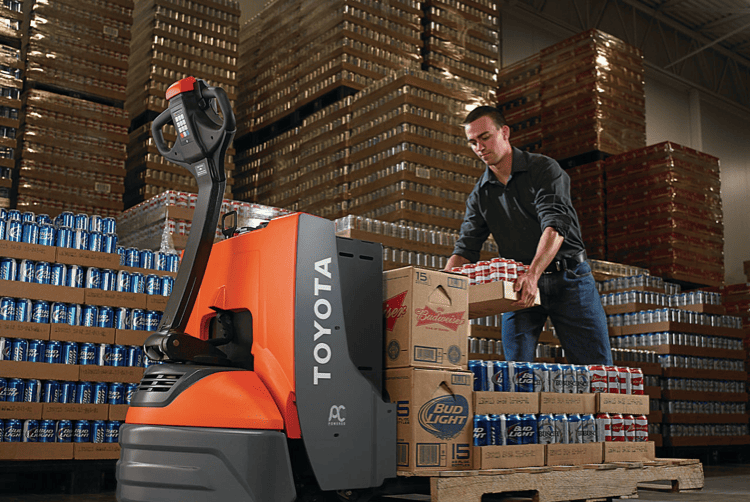
Why HR Cloud Workmates Stands Out for Modern Teams
While competitors focus on recognition features, Workmates addresses the broader challenge of employee engagement through integrated communication and recognition tools. The platform's mobile-first architecture serves distributed teams and frontline workers who represent the majority of today's workforce.
The ADP integration eliminates common implementation barriers by leveraging existing organizational data and authentication systems. Companies using ADP Workforce Now can deploy Workmates recognition features without additional user provisioning or data migration complexity. HR Cloud's specialized ADP intranet solution provides seamless single sign-on and data synchronization.
Workmates' approach to custom rewards reflects workplace flexibility trends. Rather than limiting recognition to predefined gift catalogs, companies can create reward options that match their culture—from additional PTO days to charitable contributions to team lunch budgets.
The platform's channel-based communication structure enables targeted recognition campaigns for specific locations, departments, or project teams while maintaining company-wide visibility when appropriate. Advanced content management capabilities support comprehensive information sharing and employee self-service access.
According to customer testimonials featured on HR Cloud's website, organizations using Workmates report significant improvements in communication and recognition effectiveness. For instance, one customer noted that "Our staff has praised the increased communications level Workmates delivers. We use it to communicate important project matters and give staff specific 'kudos'."
Company culture transformation becomes achievable when recognition integrates naturally with daily workflows rather than requiring separate systems and processes. Time-off management integration ensures that recognition programs account for employee availability and work-life balance considerations.
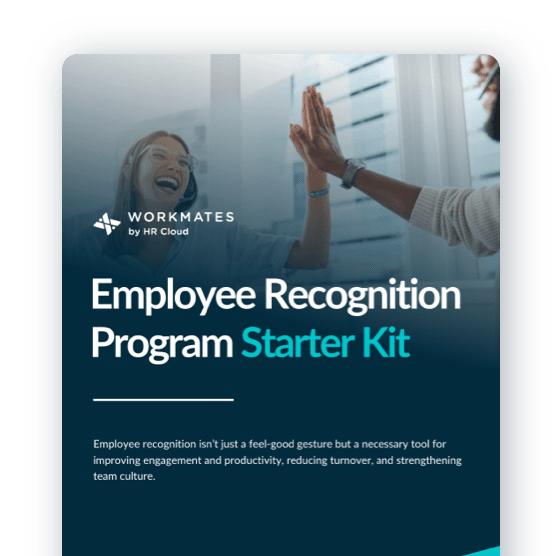

Recognition Program Success: Beyond Technology
Technology enables recognition programs, but culture determines their success. The most effective programs combine platform capabilities with intentional behavior change management and leadership modeling.
Start small with volunteer early adopters rather than mandatory company-wide launches. Recognition habits spread through positive peer influence more effectively than policy mandates. Employee onboarding processes can introduce new hires to recognition culture from day one, establishing appreciation as a core workplace behavior.
Focus on recognition quality over quantity. One thoughtful appreciation message describing specific behaviors and impact creates more engagement than five generic "great job" posts. Employee self-service platforms enable employees to access recognition guidelines and best practices independently.
Connect recognition to business outcomes through storytelling. Share examples of how peer appreciation contributed to project success, customer satisfaction, or safety improvements to demonstrate program value beyond feel-good metrics. Internal communication tools amplify success stories across the organization.
Consider seasonal recognition campaigns around company milestones, busy periods, or challenging projects. Structured recognition efforts complement ongoing peer appreciation while highlighting specific achievements and behaviors. Company intranet benefits include centralized access to campaign information and historical recognition data.
Research from SHRM emphasizes that effective recognition programs must be inclusive and culturally appropriate, ensuring every employee has equal opportunity to receive and give recognition regardless of role, location, or experience level.
Real-World Results: How Organizations Transform Culture Through Recognition
Manufacturing Excellence: Safety Recognition Drives Engagement
One HR Cloud customer in the manufacturing sector implemented Workmates to address safety compliance and team recognition challenges across multiple shifts. The organization used the platform's custom badge system to create safety-specific recognition categories, enabling supervisors and peers to immediately recognize proper protective equipment use and safety protocol adherence.
"As for Workmates, we like using Kudos to communicate with employees. To my understanding, for employee recognition, it was like a monthly safety award for wearing proper protective gear," noted a customer representative in their testimonial featured on HR Cloud's website.
The implementation included:
-
Custom safety badges aligned with company safety values
-
Mobile-first recognition enabling shift workers to participate fully
-
Integration with existing safety training programs
-
Real-time recognition feeds visible across all locations
Results demonstrated the power of immediate, peer-driven recognition in reinforcing critical safety behaviors while building stronger team connections across traditionally isolated shift workers.
Project-Based Teams: Communication and Recognition Integration
Another Workmates customer emphasized how recognition became embedded in their project management workflow. The organization uses recognition to maintain team morale during complex projects while ensuring rapid information dissemination.
"Our staff has praised the increased communications level Workmates delivers. We use it to communicate important project matters and give staff specific 'kudos' or even recognize their birthdays. More importantly, we use Workmates to clarify project details that needed rapid dissemination among the entire team," shared a project-focused customer.
This implementation showcased how recognition platforms succeed when they integrate with daily work processes rather than operating as separate systems. The combination of project updates, milestone recognition, and peer appreciation created a comprehensive engagement ecosystem.
Key Success Factors Across Customer Implementations
Analysis of HR Cloud customer testimonials reveals several common success patterns:
Mobile Adoption: Organizations achieving the highest engagement rates prioritized mobile-first implementation, ensuring frontline and distributed workers could participate equally with office-based teams.
Values Integration: Successful programs connected recognition directly to company values through custom badges and recognition categories, reinforcing desired behaviors while celebrating achievements.
Manager Modeling: Customer feedback consistently emphasizes that manager participation in giving recognition influences overall program adoption and cultural impact.
Communication Integration: The most successful implementations combined recognition with broader communication strategies, using Workmates as a comprehensive engagement platform rather than a recognition-only tool.
Frequently Asked Questions About Employee Recognition Software
How quickly can organizations implement Workmates employee recognition software for 500 frontline workers?
Standard implementation timelines for 500 employees range from 2-4 weeks with HR Cloud's structured deployment methodology. Organizations with existing ADP Workforce Now integrations often achieve faster setup completion due to automated employee data synchronization and single sign-on configuration. Frontline worker adoption rates typically accelerate when recognition platforms include offline mobile functionality and intuitive navigation designed for deskless employees.
Can employee recognition points be redeemed for local gift cards across global locations?
Yes, Workmates supports both comprehensive global gift card catalogs and location-specific custom reward options. Organizations can configure different reward redemption options by geographic region, department structure, or employee classification while maintaining unified points systems and centralized recognition tracking across all operational locations.
What workforce analytics help demonstrate employee recognition program return on investment?
Workmates provides comprehensive dashboards tracking recognition volume metrics, employee participation rates, eNPS correlation analysis, and reward redemption patterns. The most valuable business metrics connect recognition data to measurable outcomes including retention rates among recognized employees, engagement survey improvements, and manager effectiveness indicators. HR Cloud's analytics suite enables correlation analysis with existing HR metrics and business performance data.
How do organizations prevent employee recognition program gaming or participation unfairness?
Recognition platforms include spending limit controls, approval workflow configurations, and recognition pattern analytics to maintain program integrity and fairness. Common gaming behaviors include point hoarding strategies and reciprocal recognition agreements—both patterns become visible through comprehensive analytics dashboards. SHRM research emphasizes that clear program guidelines and comprehensive manager training address behavioral issues more effectively than restrictive technology limitations.
Does Workmates employee recognition software integrate with existing communication platforms?
Yes, Workmates provides native integrations with Slack, Microsoft Teams, and other workplace communication platforms to share peer recognition across channels employees actively use. These integrations prevent recognition information silos while maintaining program visibility and sustained engagement momentum across distributed teams.
What services are included in Workmates implementation and employee training programs?
HR Cloud provides comprehensive platform configuration, organizational setup, manager training materials, and ongoing technical support as standard components of recognition software implementation. Included services cover custom recognition badge creation, reward catalog configuration, analytics dashboard setup, and user training resources. Additional services including change management consulting and custom integration development are available through professional services engagements.
How do organizations measure employee recognition program success beyond standard engagement surveys?
Successful recognition programs track leading performance indicators including recognition frequency metrics, mobile adoption rates, and manager participation levels alongside business outcomes such as retention rates, referral hiring success, and workplace safety metrics. The most meaningful measurement strategies combine quantitative workforce data with qualitative feedback about recognition quality and cultural impact assessment. Gallup's research demonstrates that organizations with effective recognition programs experience significant improvements across multiple business performance metrics.
Can organizations customize employee recognition categories and badge designs for specific company cultures?
Workmates enables complete customization of recognition badges, appreciation categories, and reward redemption options to reflect organizational values and cultural preferences. Organizations create recognition badges for specific behaviors including customer focus, innovation excellence, safety compliance, and custom rewards ranging from preferred parking assignments to charitable donation matching. HR Cloud's employee engagement software guide explains how comprehensive customization supports diverse organizational cultures while maintaining program consistency and effectiveness.
Ready to transform your workplace culture with peer-to-peer recognition? Schedule a personalized Workmates demo to see how integrated recognition, communication, and analytics drive measurable engagement improvements for distributed teams.

Keep Reading
Best Peer-to-Peer Recognition Software & Kudos Platforms (2025 Buyer's Guide)
Picture this: A manufacturing team in Ohio just hit their monthly safety record. In the
Employee Communication Platform for Schools: Reach Non-Email Staff with Workmates
You send an important update, say a new policy, field trip schedule, or safety drill
Bonusly vs Kudos vs HR Cloud: The Ultimate Employee Recognition Platform Comparison for Mid-Market Companies in 2025
While Bonusly excels at simple peer-to-peer recognition and Kudos offers enterprise-grade
Like What You Hear?
We'd love to chat with you more about how HR Cloud® can support your business's HR needs. Book Your Free Demo

Build a Culture of Recognition. Boost Engagement. Guaranteed.
Workmates empowers employees to stay informed, connected, and appreciated—whether they’re on the front line, in the office, or remote. Recognition drives 12x higher engagement.Trusted by industry leaders in every sector




Cut Onboarding Costs by 60%.
Take the confusion and follow-ups out of onboarding with automated workflows, digital forms, and structured portals—so new hires ramp faster 3X quicker.Trusted by industry leaders in every sector




